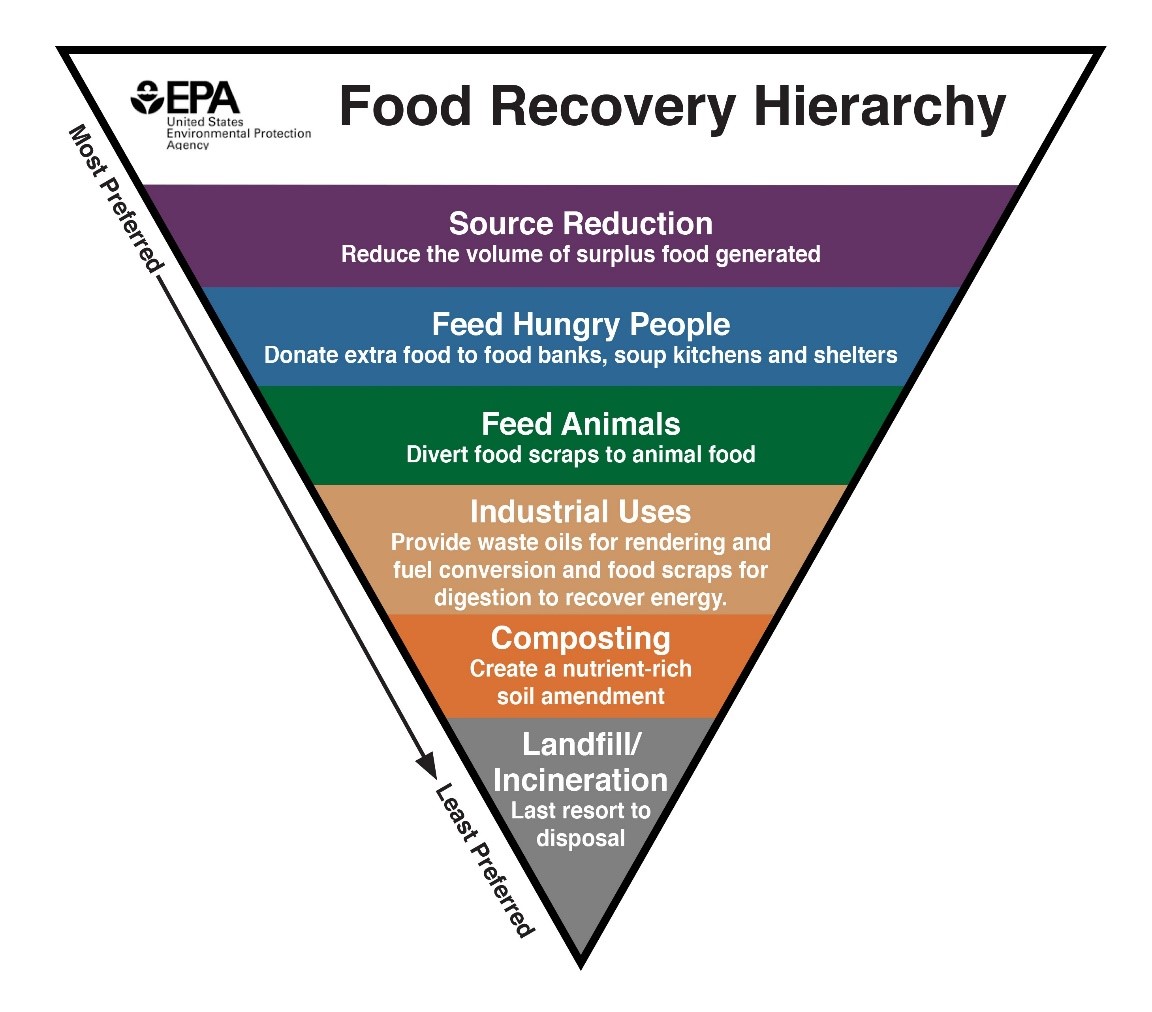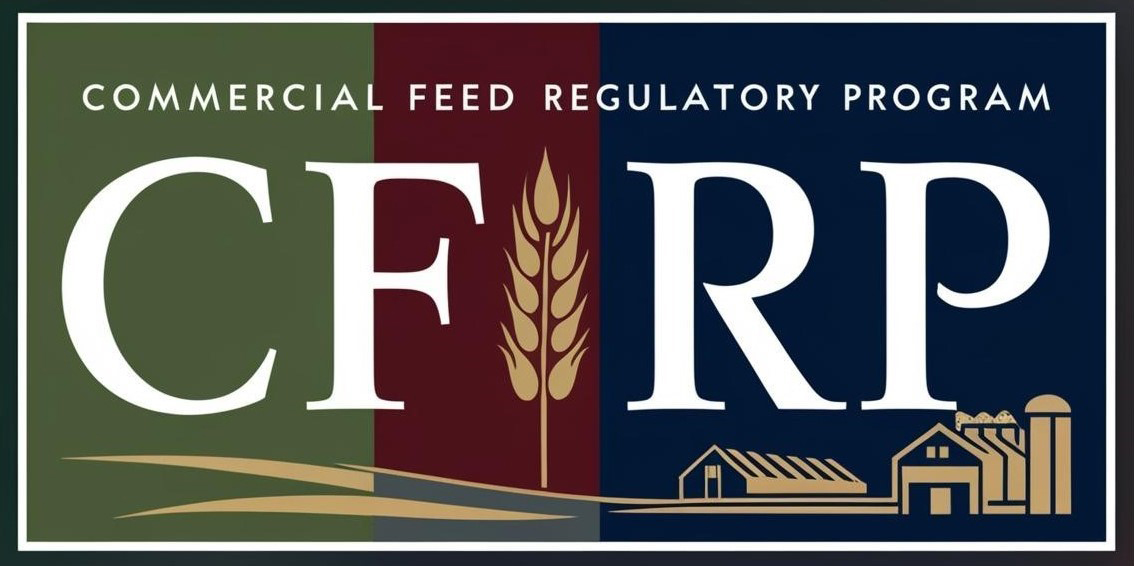Human Food Waste (By-product) Diversion
What Can Be Diverted To Animal Feed?
Over 12.5 million tons of human food waste is currently being diverted to animal feed within California’s livestock feed industry. According to U.S. EPA’s Food Recovery Hierarchy diagram below, recovering food to feed animals is the next best use for food products when they can no longer be used to feed humans. The California feed industry has been sustainably up-cycling for generations by diverting locally produced food waste to nutritious animal feed. California is the # 1 producer of nuts, fruits, and vegetables which also creates tonnage of food waste such as fruit pulp/pomace, almond hulls, brewer’s grains, or other products not consumed by humans. Livestock, particularly ruminants (cattle), have digestive systems which can utilize the remaining nutritional value in such food waste.
Diversion of food waste to animal feed is a sustainable process with several benefits:

- The reduction of food waste into landfill, compost, or other industries less preferred by U.S. EPA for food recovery than feeding animals.
- Creates an up-cycling opportunity for that waste to be converted into a local supply of meat, milk, and eggs for California’s 39 million residents, in addition to the export economy.
- Reduces the need for production or import of traditional feedstuffs for California livestock.
- Provides an affordable alternative to traditional feedstuffs which is crucial for the success of California ranching and farming families. The availability of food waste diversion to animal feed is especially critical amid drought and supply chain volatility.
CDFA’s Commercial Feed Regulatory Program and the feed industry see potential to increase the capacity of food waste diversion to animal food and allow for additional diversion. New streams of diversion can include food from human food manufacturing facilities. These facilities may include human food manufacturers, restaurants, retail establishments or anywhere that serves food (i.e. hotels and cafeterias).
Requirements
Products may be diverted to animal feed if they are properly stored and handled and have remaining nutritional value for livestock. A list of these products can include but are not limited to: cull fruits/vegetables, fruit/vegetable pomace, bakery products, or products that are at the end of their shelf life.
Human food processing plants and other facilities that are diverting human food waste to animal feed are not subject to franchise requirements under Public Resources Code, Section 40059.4 (b)(5). However, are required to obtain a California Commercial Feed License.
Visit https://www.cdfa.ca.gov/is/ffldrs/CommercialFeedReg.html for more information about CDFA’s Feed Laws & Regulations and licensing requirements.
WHAT CAN’T BE DIVERTED TO ANIMAL FEED?
Products which are not an approved feed ingredient may not be diverted to animal feed, such as yard and lawn clippings or ornamental plants. Such products may contain plants or weeds which are poisonous to animals. To determine if a product is an approved feed ingredient, reference the California Code of Regulations, Title 3, Division 4, Chapter 2, Subchapter 2, Article 14.
Material that is spoiled, moldy, or contaminated with foreign materials or other substances cannot be diverted to animal feed, even if the product is an approved feed ingredient. Residential waste or garbage collected from residential areas is not suitable for animal feed. The risk of chemical, physical, or biological hazards in residential waste is too high to be utilized as animal feed.
Additionally, any inedible products containing raw meat or meat products are required to go to rendering. Refer to CDFA’s Rendering Program for more information, http://www.cdfa.ca.gov/AHFSS/MPES/Rendering/index.html.
Products that are not suitable for animal feed may be diverted to compost rather than landfill. Visit https://calrecycle.ca.gov/organics/ for more information.


 Commercial Feed Regulatory Program
Commercial Feed Regulatory Program